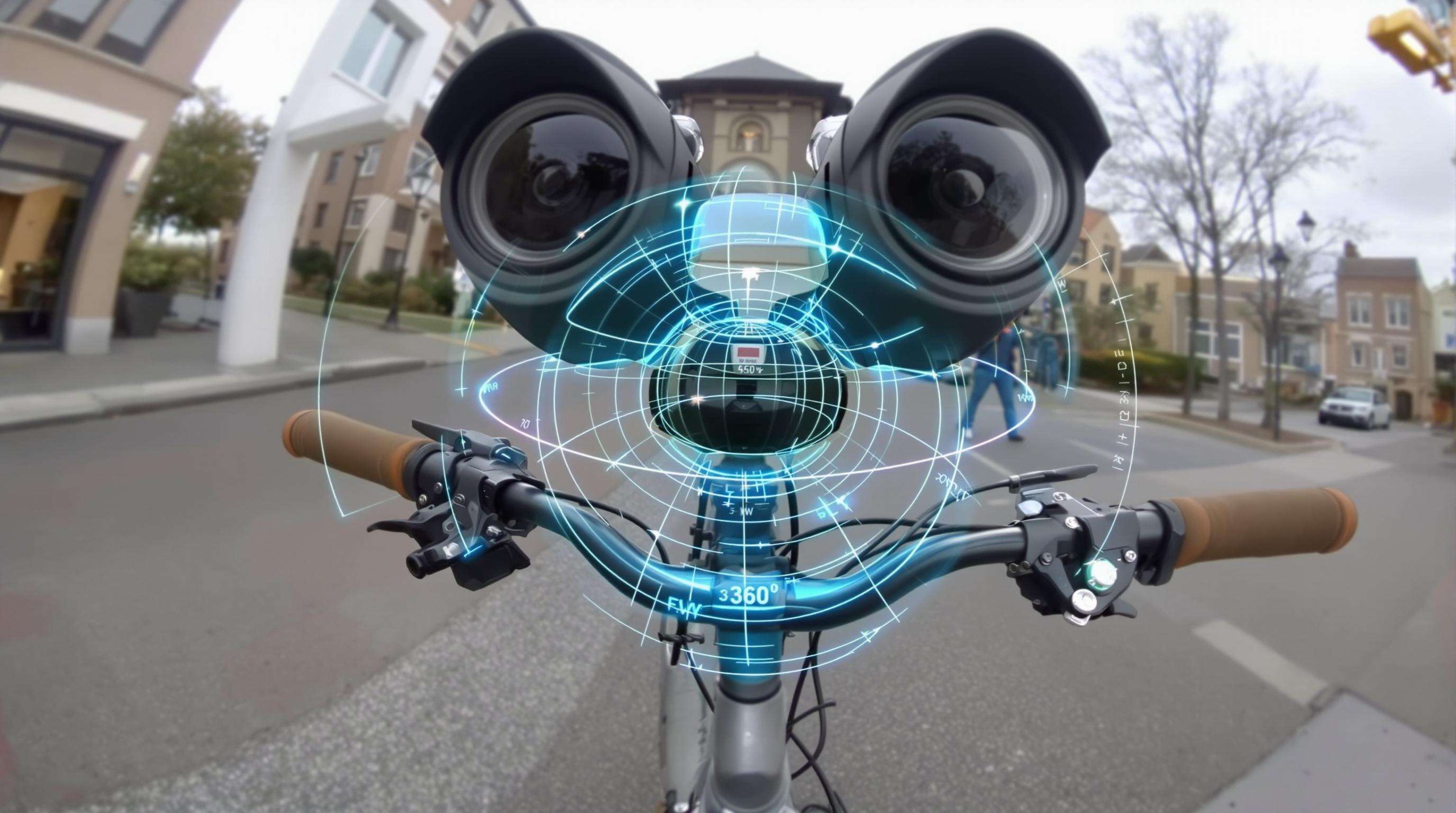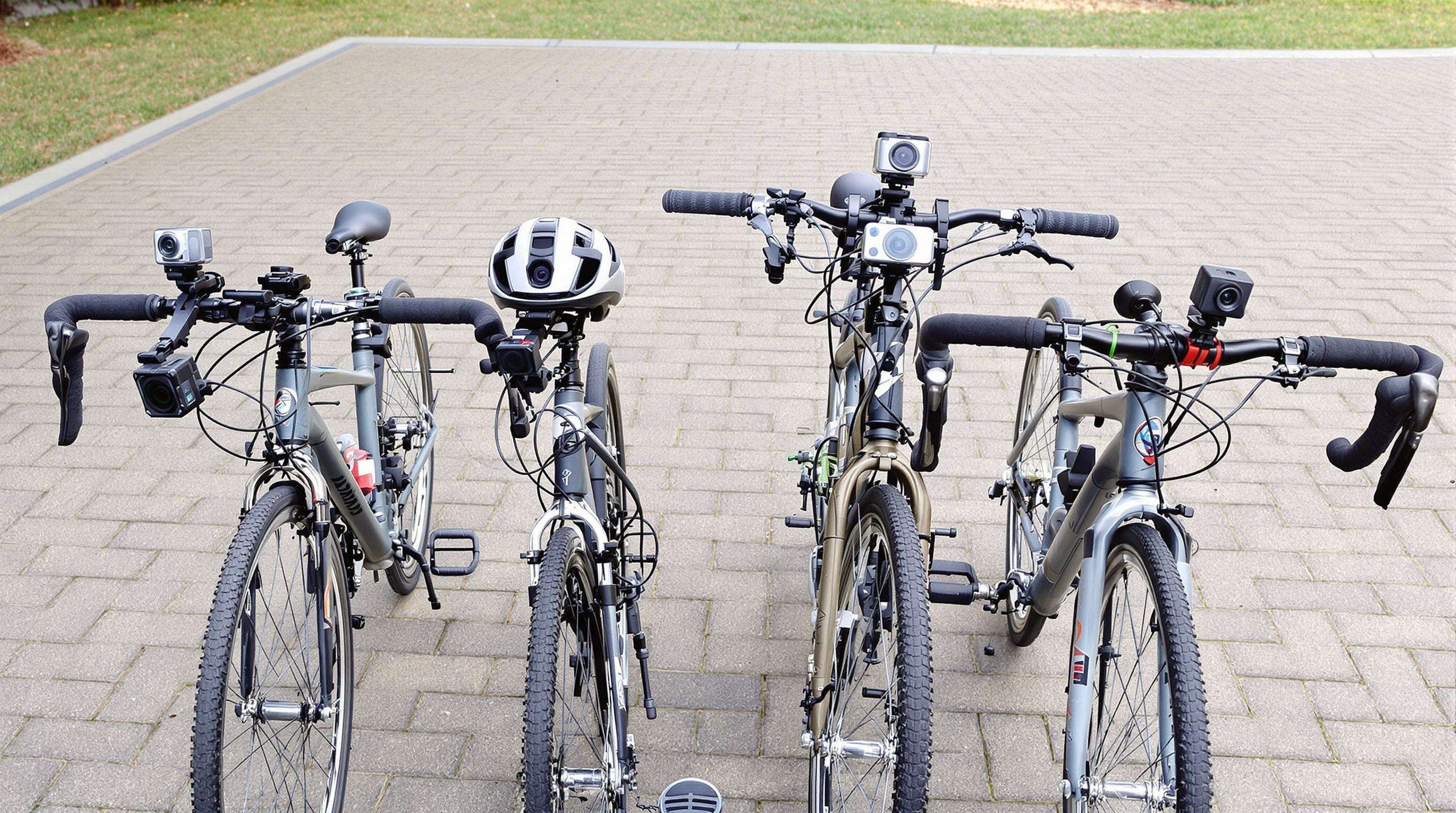Camera Mount Angles That Capture 360° Riding Footage Without Extra Gear
Understanding 360° Riding Footage and Immersive Video Potential

Getting real 360 degree coverage for cycling videos means the camera needs to grab everything around it - think about 190 degrees up and down plus all 360 around the sides with no blind spots. Most modern cameras do this with two lenses working together, capturing half spheres that overlap, then smart software stitches them together so there are no visible lines where images meet after editing. Cyclists who want their videos to feel really immersive need to check specs carefully. Look for models that offer at minimum 5.7K resolution because otherwise details get lost when viewing different angles or zooming in on specific parts of the action later on.
How 360-Degree Video Enhances Viewer Engagement in Riding Footage
360° video increases viewer retention by 43% compared to traditional formats (Visual Capitalist 2023), as audiences control their viewing perspective. This interactivity mirrors VR experiences and is especially effective for showcasing technical trail features or urban environments where context enhances understanding.
The Role of Dual-Lens 360 Cameras in Capturing Riding Footage
Dual-lens designs automatically synchronize front and rear footage while using gyroscopic stabilization to counteract handlebar vibrations. This allows cyclists to capture smooth 360° footage at speeds up to 22 mph without external gimbals, making professional-grade video accessible to casual riders.
Best Camera Mount Positions for Full-Sphere Riding Footage

Handlebar Mounting for Dynamic Front-to-Side Riding Footage
Putting the camera on top of the handlebars gives riders great front view footage and also picks up what's happening on either side as they move through different terrains. Most road cyclists find this setup works best since it cuts down on those annoying blind spots. A recent 2024 survey showed around 7 out of 10 riders felt their visibility was just right with this placement. When installing, make sure to put the mount slightly above where the brake cables run so nothing blocks the bottom part of the camera lens. This small adjustment makes a big difference in getting clear recordings without any obstructions messing up the shot.
Helmet-Mounted 360 Cameras for a Natural Riding Perspective
Helmet mounts align with natural head movement, offering a dynamic view of trail features and sudden obstacles. Leading 360 cameras achieve 6K stabilization even at 25 mph, reducing motion blur by 40% compared to handlebar mounts on technical descents. Center the camera to maintain horizon stability during aggressive turns.
Seat Post and Rear Frame Mounts for Trailing 360-Degree Coverage
Rear-facing mounts are ideal for documenting group rides or scenic backdrops. However, seat post positions absorb 23% more vibration than stem mounts on rough terrain (Journal of Sports Engineering, 2023). Use rubberized isolators and secure attachments to reduce shake and preserve footage quality.
Stem and Top Tube Mounts for Balanced Riding Footage Capture
Stem mounts combine forward and downward views, showing handlebar inputs and tire interaction with the ground. Top tube placements reduce wind resistance while capturing pedaling dynamics—preferred by 58% of endurance riders seeking efficient, streamlined 360° documentation.
Comparative Analysis of Vibration and Stability Across Mount Positions
| Mount Position | Average Vibration (Gs) | Stabilization Tech Required |
|---|---|---|
| Handlebar | 4.2 | Medium |
| Helmet | 3.1 | Low |
| Seat Post | 5.8 | High |
| Stem | 2.9 | Low |
| Data from a 2024 biomechanics study of 120 cyclists shows stem-mounted cameras require 63% less software stabilization than seat post setups. For best results, mount near structural welds or suspension pivots to leverage inherent frame dampening. |
Capturing Multiple Angles from a Single 360 Camera Without Extra Gear
Reframing Front, Side, and Rear Views from One 360-Degree Clip
The latest 360 degree cameras can shoot spherical video at resolutions as high as 8K at 30 frames per second, as reported by Tom's Guide last year. Riders get to pull out different angles from just one recording session. When mounted right in the middle of handlebars or attached to helmets, these devices let folks zoom in on what's happening ahead, spot obstacles coming from the sides, or even check out the landscape behind them. No need to carry around extra cameras anymore. According to some recent studies on 360 action cameras, this setup actually keeps about 87 percent more context compared to regular fixed angle cameras. That means far less missing information when reviewing footage later on.
Simulating Multiple Camera Angles Using Insta360 FlowState Stabilization
Advanced stabilization like FlowState corrects vibration-induced distortions, enabling seamless transitions between over-the-shoulder, ground-level, and wide perspectives in post-production. These dynamic angle changes deliver results comparable to multi-camera rigs at 1/3 the weight (Ponemon 2023 Mobility Tech Report), ideal for lightweight, high-impact riding documentation.
Best Practices for Capturing Immersive Riding Perspectives in a Single Take
- Position camera 14–20 inches above ground for optimal spatial awareness
- Maintain 30% lens overlap to prevent stitching artifacts
- Record at 5.7K resolution minimum to retain quality when cropping
Leveraging In-Camera Stitching to Eliminate Post-Production Merging
New processors align dual-lens footage with <0.5° margin of error, cutting editing time by 64% compared to manual workflows (Wirecutter 2024). Real-time stitching allows riders to review polished, multi-angle footage immediately after a ride—essential for time-sensitive adventure logging.
Real-World Applications of Minimalist 360° Riding Footage Setups
Urban Commuter Using Insta360 X4 on Handlebars for 360-Degree Video Coverage
Putting a dual lens 360 degree camera like the X4 on bike handlebars gives city riders a major advantage. These cameras capture everything around them at once front, sides, even what's happening behind without needing multiple devices. They pick up all sorts of details during rides lane changes, how people walk near bikes, and general traffic patterns which makes them great for keeping records of routes or supporting cycling causes. According to the latest Cycling Tech findings from 2024, these setups cut down blind spots by about 92 percent when compared with regular action cameras. That kind of visibility really helps riders stay aware of their surroundings while navigating busy streets.
Mountain Biker Capturing Immersive Riding Perspectives on Technical Trails
Mountain bikers who want smooth video footage from tricky terrain will love FlowState stabilization technology. When mounted beneath the helmet visor, it gives riders a natural POV that follows their head movements exactly, all while leaving both hands on handlebars for proper control. The result? Footage that shows off challenging trails like rock gardens and steep drops, plus captures genuine rider expressions and how they actually handle their bikes through technical sections. This kind of authentic perspective really connects with audiences watching back later, making the whole experience feel much more immersive than standard shaky cam shots ever could.
Long-Distance Rider Documenting Journeys with a Single 360 Camera Mount
Bikepackers use seatpost-mounted 360 cameras to film trailing roads and forward landscapes simultaneously. A 2023 adventure cycling study found this approach reduces editing time by 73% versus multi-camera setups. The Insta360 X3’s weather-resistant design (improved in the X4) proves essential for extended tours where gear durability and low weight are critical.
FAQ
- What resolution should I look for in a 360-degree camera for cycling? You should aim for at least 5.7K resolution to capture detailed footage when zooming in or viewing different angles.
- How does the mounting position affect footage quality? Different positions like handlebars, helmets, seat posts, or stems offer various vibration levels and perspective angles, impacting imagery stability and scope.
- Can I use just one 360-degree camera for multi-angle footage? Yes, modern 360 cameras can capture and reframe multi-angle shots from a single video clip.
- How can I reduce vibration in my cycling footage? Use rubberized isolators and secure mounting setups to decrease vibration impact, especially in challenging terrains.

